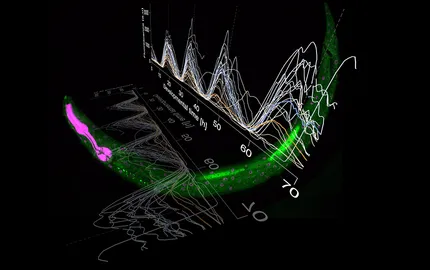Presentation

Development is the process by which the fertilised egg, a single cell, transforms into a fully functional multicellular organism. During this transformation, all basic cellular processes – from the cycle of each cell division to the formation of individual organs – need to be precisely coordinated in time and space. Our team uses an interdisciplinary strategy with focus on live-imaging approaches to understand how the collective action of gene networks and environmental factors drives the emergence of biological shapes and patterns. Ultimately, we would like to reveal evolutionary conserved principles of patterning in metazoan development and expose novel mechanisms underlying developmental precision and robustness.
We use an interdisciplinary strategy at the interface between biology and physics, employing both experimental and theoretical approaches. Our model organism is the small roundworm Caenorhabditis elegans (C. elegans), a simple multicellular organism with ~1000 cells. On one end, we develop novel techniques to improve our ability to obtain quantitative high-resolution dynamic data on C. elegans development (live imaging with microfluidics, on-chip perturbations of development, software for automated phenotypic analyses of 4D microscopy data etc.). At the same time, we study a variety of paradigmatic developmental patterning problems in the worm for which high-resolution dynamic imaging data can really transform our understanding of the underlying mechanisms. Finally, we develop theoretical approaches to conceptualise these mechanisms and uncover general principles of development.
Our approach relies on a combination of areas of expertise of the group:
(i) Large scale quantitative live-imaging capturing gene expression and protein dynamics as well as developmental phenotypes (i.e. cell-lineages) during C. elegans development
(ii) Cutting-edge microfluidics technologies for high-resolution long-term live-imaging as well as for delivering precise spatiotemporal perturbations of development on-chip;
(iii) State-of-the-art genome editing tools to generate live reporter strains and mutants
(iv) Software tools for automated high-throughput analyses of developmental phenotypes, including, e.g. tracking of cell divisions, gene expression in C. elegans;
(v) Mathematical modeling of gene expression dynamics and cell-fate decisions processes, making quantitative predictions that are testable in experiments.

















